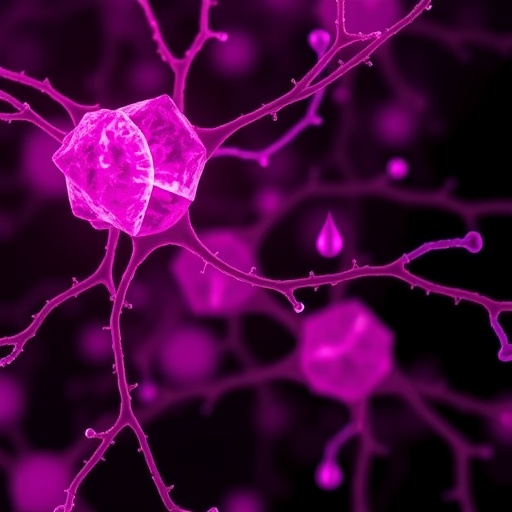Our ability to breathe oxygen is critical to our survival. This process is mediated by the hemoglobin in our blood, which carries oxygen. Since air contains less oxygen on high mountains, the body is under pressure to make hemoglobin rapidly — a stressful time. But what role does cellular stress play in the production of hemoglobin?
In a paper in the high-impact journal Cell Research, published April 4, 2017, researchers at the Hebrew University of Jerusalem report the discovery of an entirely new mechanism through which globin genes are expressed. Discovery of this hitherto unknown property of the hemoglobin genes shows that stress is absolutely needed to allow for the production of hemoglobin.
To produce a globin protein molecule, the DNA of the globin gene is first transcribed into a long RNA molecule from which internal segments must be excised, or spliced out, to generate the RNA template for protein synthesis in the red cell.
Now, a team of molecular biologists led by Prof. Raymond Kaempfer in the Hebrew University's Faculty of Medicine reports that for each of the adult and fetal globin genes, the splicing of its RNA is strictly controlled by an intracellular stress signal.
The signal, which has been known for a long time, involves an enzyme present in every cell of the body, called PKR, which remains silent unless it is activated by a specific RNA structure thought to occur only in RNA made by viruses.
What Kaempfer and collaborators have discovered is that the long RNAs transcribed from the globin genes each contain a short intrinsic RNA element that is capable of strongly activating PKR. Unless the PKR enzyme is activated in this manner, the long RNA cannot be spliced to form the mature RNA template for globin protein synthesis.
"Surprisingly, we have revealed an entirely new mechanism through which hemoglobin gene expression is regulated by stress. An intracellular signal, essential for coping with stress, is absolutely necessary to allow for hemoglobin production. That stress signal is activated by the hemoglobin gene itself. Although we have long known that this signal strongly inhibits protein synthesis in general, during hemoglobin gene expression it first plays its indispensable, positive role before being turned off promptly to allow for massive hemoglobin formation needed for breathing," said Prof. Raymond Kaempfer, the Dr. Philip M. Marcus Professor of Molecular Biology and Cancer Research at the Hebrew University of Jerusalem.
Once activated, PKR will place a phosphate (a process known as phosphorylation) onto a key initiation factor needed for the synthesis of all proteins, called eIF2-alpha. That in turn leads to inactivation of eIF2-alpha, resulting in a block in protein synthesis. This process is essential for coping with stress.
Most unexpectedly, they discovered that once activated, PKR must phosphorylate eIF2-alpha, and that phosphorylated eIF2-alpha is essential to form the machinery needed to splice globin RNA. In the splicing process, removal of an internal RNA segment causes the mature RNA product to refold such that it no longer will activate PKR, now allowing for unimpeded synthesis on this RNA of the essential globin protein chains at maximal rates, allowing for effective oxygen breathing. In other words, the ability to activate PKR remains transient, serving solely to enable splicing.
Thus, the team has demonstrated a novel, positive role for PKR activation and eIF2-alpha phosphorylation in human globin RNA splicing, in contrast to the long-standing negative role of this intracellular stress response in protein synthesis.
The realization that stress is not only important but also essential may have important implications for how we understand hemoglobin expression. "What this boils down to is that even at the cellular level, stress and the ability to mount a stress response are essential to our survival. We have long known this in relation to other biological processes, and now we see that it is at play even for the tiny molecules that carry oxygen in our blood," said Prof. Kaempfer.
Kaempfer's lab is in the Department of Biochemistry and Molecular Biology at IMRIC, the Institute for Medical Research-Israel Canada, in the Hebrew University's Faculty of Medicine. IMRIC is one of the most innovative biomedical research organizations in Israel and worldwide, bringing together brilliant scientific minds to find solutions to the world's most serious medical problems through a multidisciplinary approach to biomedical research.
###
More information at http://imric.org.
Media Contact
Dov Smith
[email protected]
972-258-82844
@HebrewU
http://new.huji.ac.il/en
############
Story Source: Materials provided by Scienmag




